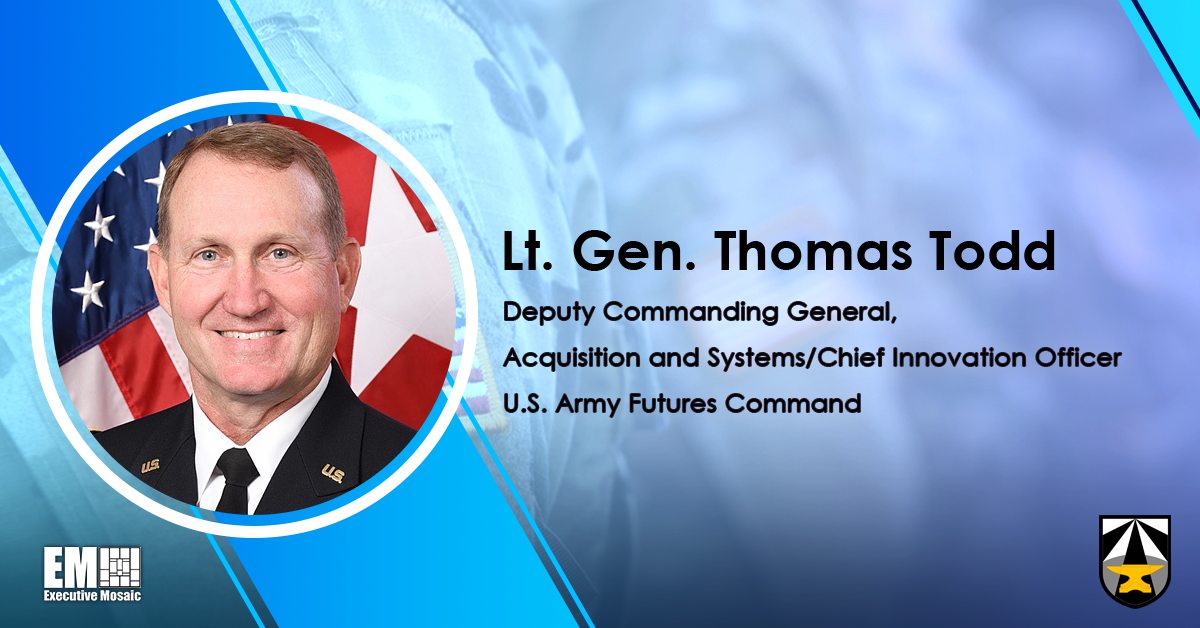In response to the growing need for modern defense technologies now and in the future, the United States Army established its Army Futures Command, an organization dedicated to facilitating persistent modernization within the service branch. Since its launch in 2018, the command has centered three focus areas: prioritizing people, designing the Army of 2040 and delivering the Army of 2030.
Lt. Gen. Thomas Todd, deputy commanding general for acquisition and systems and chief innovation officer of the Army Futures Command, said bringing these visions to fruition is a journey that requires an overhaul of current processes and the creation of a culture that empowers innovation and efficient iteration.
During his keynote address Thursday at the Potomac Officers Club’s Securing Tomorrow’s Future: The Urgency of Persistent Modernization Forum on Thursday, Todd described the nature of persistent transformation, which he said is opportunistic, predictive, responsive and rapid.
“In order to achieve that, we have to structurally change the way that the Army ingests what we are attempting to do,” he said.
Currently, said Todd, the Army operates using processes that do not allow for ideas and the resulting technologies to develop at the rate needed to meet the demands of the ever-changing modern battlespace.
Todd noted an example from his early days as a leader, which involved cost-related scaling roadblocks that caused problems for his unit. The situation was a result of using archaic processes that did not allow for sufficient consideration of the technology’s expenses before it was brought to the battlefield.
“We do not iterate quickly enough. We have to start iterating efficiently and correctly,” said Todd.
“If we are to drive at the pace of these processes, we will be stuck in the past. Our job is to establish the idea that persistent innovation does not just transform persistently, but it innovates persistently,” he stated.
The road to delivering the Army of 2030 and crafting the Army’s more distant future, said Todd, is one that begins with challenging the service branch’s norms.
“When we say ‘deliver the army of 2030,’ we do not mean just technology. We mean organizations, doctrine, concepts and the training that goes with it,” he said.
According to Todd, initiating this shift involves empowering discovery by establishing leadership, culture and practices that promote learning, which goes hand-in-hand with an improved innovation and iteration process.
To implement the technology and functions needed to bring the Army into 2030 and later, 2040, Todd said that the service branch must embrace these necessary changes and acknowledge the role learning plays in developing and successfully implementing new technologies.
“We cannot continue to use just programmed events. They are great for something you have already logged down and want to do, but they are not great for learning,” he emphasized.
The Army, said Todd, has already taken steps in the right direction. He said the service is becoming a learning-focused organization and has already begun to change how it considers information.
Looking forward, Todd aims to continue this momentum by posing tough questions, experimenting and analyzing data to ensure programming that exceeds the established threshold.

The Potomac Officers Club will host its 9th Annual R&D Summit on March 23, which will provide additional insight from leading executives in the field on the role of innovation in defense operations. To learn more and register to attend, please visit the Potomac Officers Club’s events page.
















